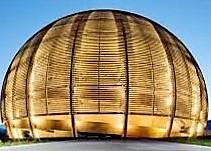Speaker
Description
The lighter heavy elements of the first r-process peak, between strontium and silver, can be synthesized in the moderately neutron rich neutrino–driven ejecta of either core–collapse supernovae or neutron star mergers via the weak r–process [1]. This nucleosynthesis scenario exhibits uncertainties from the absence of experimental data from $(\alpha,xn)$ reactions on neutron–rich nuclei, which are currently based on statistical model estimates. We have performed a new impact study to identify the most important $(\alpha,xn)$ reactions that can affect the production of the lighter heavy elements under different astrophysical conditions, based on the work of Ref. [2] and using new, constrained $(\alpha,xn)$ reaction rates using the Atomki-V2 αOMP [3]. We have identified a list of relevant reactions that affect elemental abundance ratios that are observed in metal-poor stars [4]. Our results show how when reducing the nuclear physics uncertainties, we can use abundance ratios to constrain the astrophysical conditions/environment. This can be achieved in the near future, when the key $(\alpha,xn)$ reaction rates will be measured experimentally in radioactive beam facilities.
*This work was supported by the Deutsche Forschungsgemeinschaft (DFG, German Research Foundation)—Project No. 279384907—SFB 1245, the European Research Council Grant No. 677912 EUROPIUM, and the State of Hesse within the Research Cluster ELEMENTS (Project ID 500/10.006)
References
[1] A. Arcones and F. Montes, Astrophys. J. 731, 5 (2011).
[2] J. Bliss et al., Phys. Rev. C 101, 055807 (2020).
[3] P. Mohr et al., At. Data Nucl. Data Tables 142, 101543 (2021).
[4] A. Psaltis et al. (submitted), (2022).
